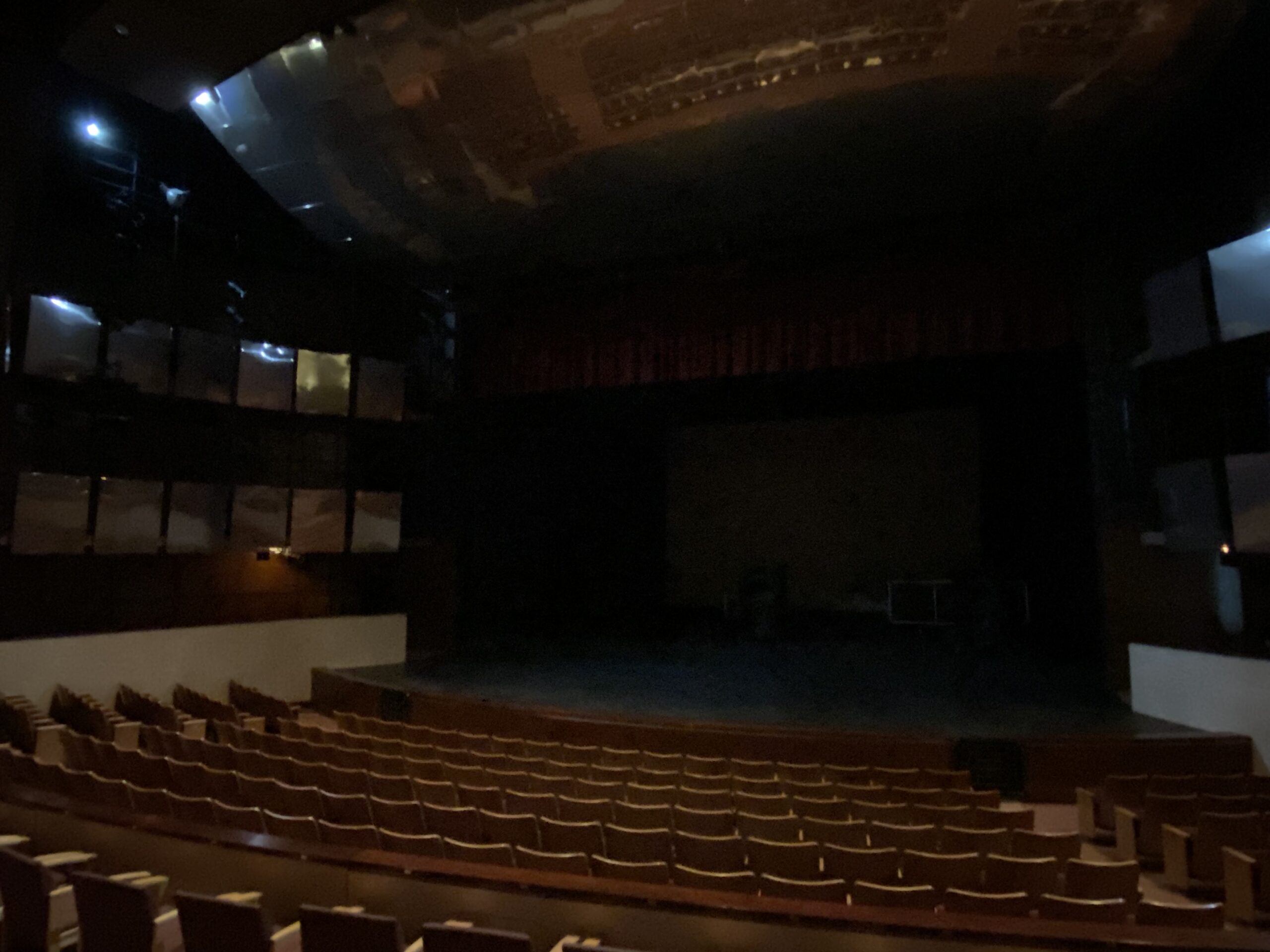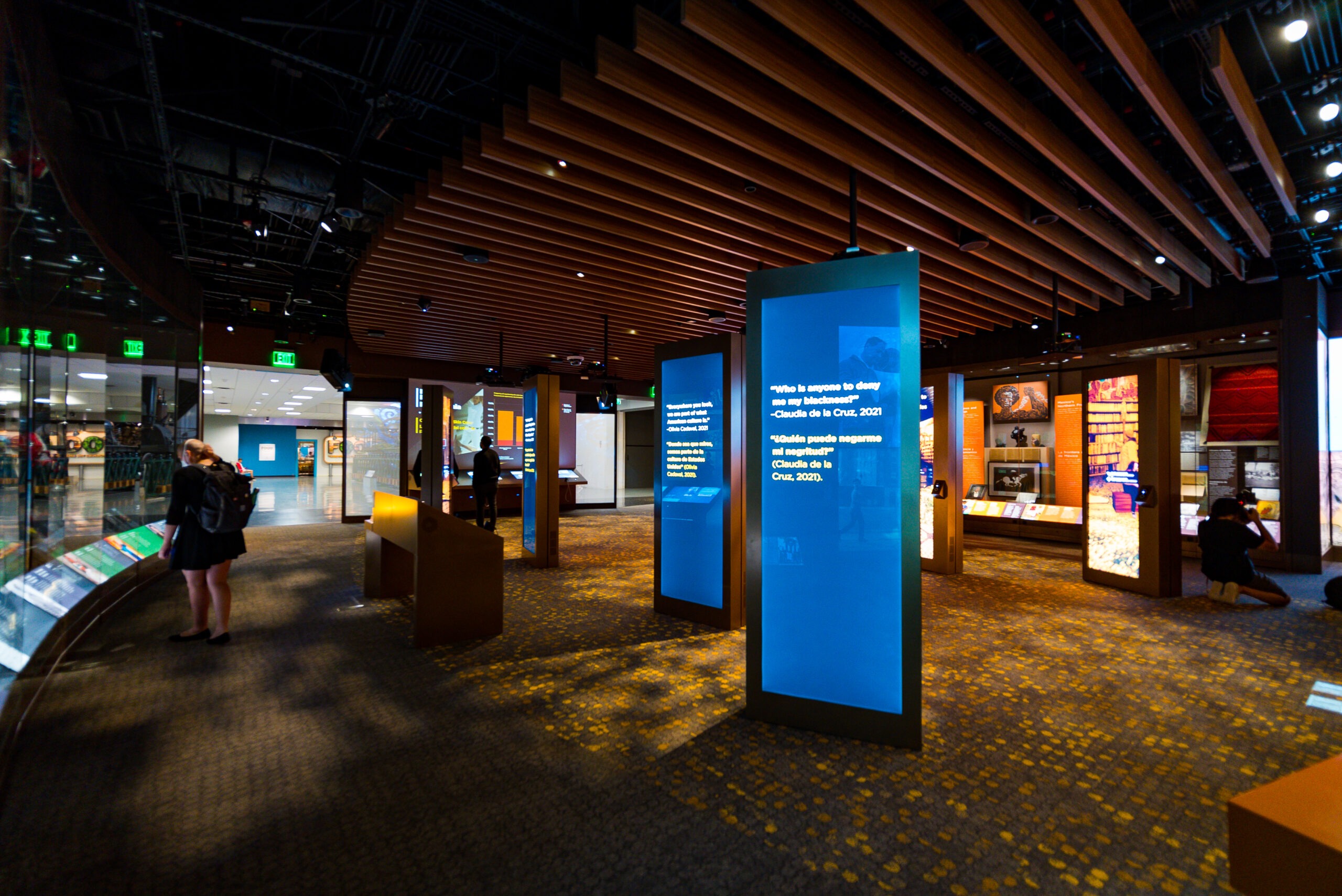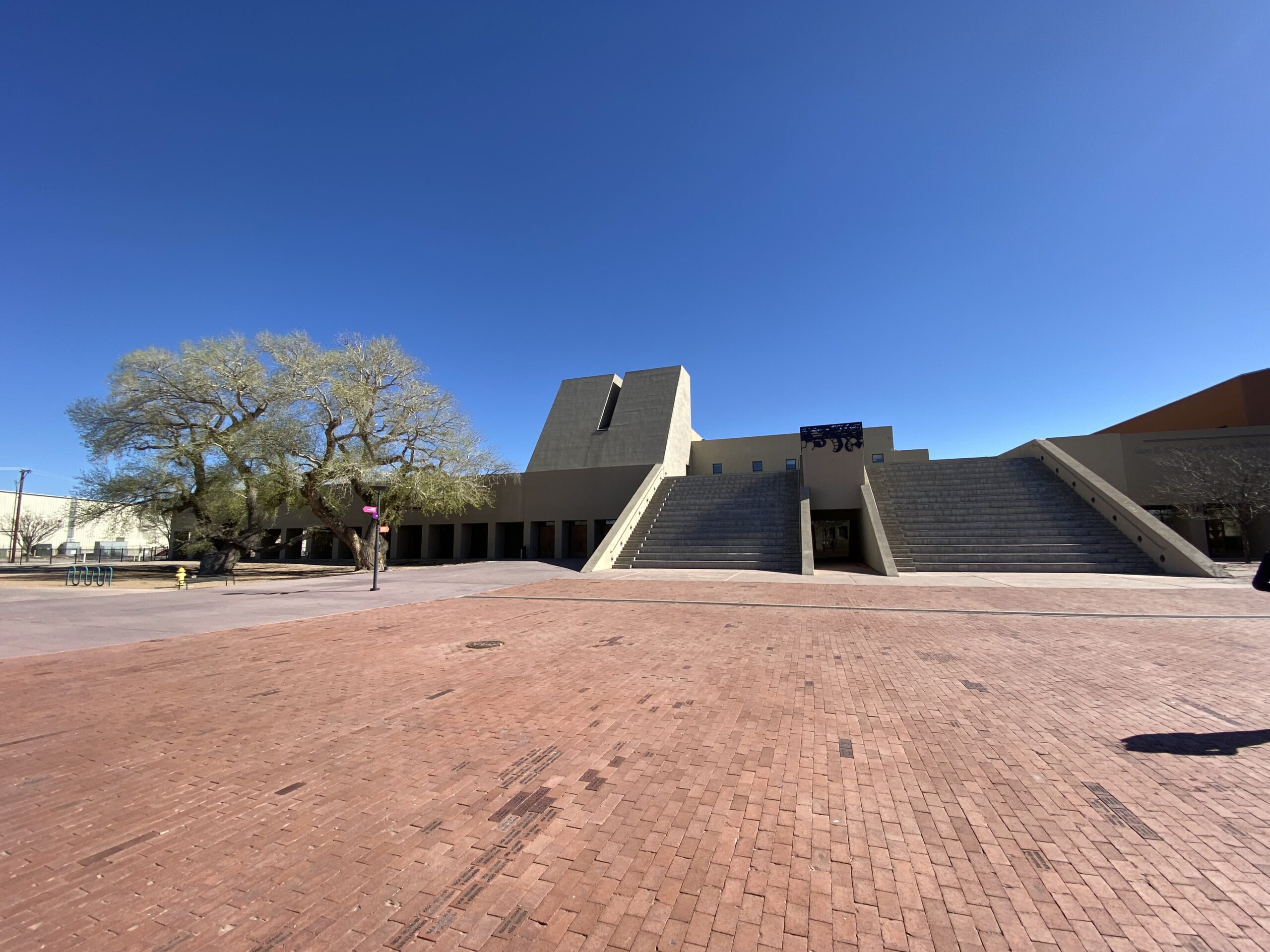How culture and history elevate events
Celebrating cultural heritage, whether one’s own or that of others, is an engaging method to provoke thought and inspiration in attendees at events hosted at venues focused on celebrating various backgrounds.
What transpired nearly 600 years ago with the Age of Discovery led to the inception of a multitude of cultures spawned from the Spanish diaspora—each with a unique flare succinctly intertwined with the DNA of the Western world. And that depth of history is an element that can capture the imagination of attendees while sparking interest in the material presented during events.
A Cultural Home of Diverse Identities
Albuquerque’s National Hispanic Cultural Center (NHCC) is an architectural gem located in the historic Barelas neighborhood situated alongside the Rio Grande and the Paseo Del Bosque—one of the largest Bosques (a gallery forest habitat that grows along riverbanks, streams and floodplains in the Southwest U.S.) in the world. With eight ample meeting spaces, the NHCC is ideal for any group size and event. Planners can take advantage of this beautiful and unique scenery by booking the Pete Padilla & Manuel Mora Memorial Park space, Pete V. Domenici Education Center or the Bosque Gallery—all of which are fronted by the lush scenery of the park along the river.
Read More: How to Harness the Power of Native American Cultural Centers
The NHCC’s Roy E. Disney Center for Performing Arts was funded by the Disney brother in 2004 following a multi-million-dollar donation to the cultural center. “There’s three theaters in this building,” said Alberto Cuessy, deputy director of the NHCC. The center for performing arts includes the Albuquerque Journal Theater with a max capacity of 691, the Bank of America Theater which can seat up to 291 and the Wells Fargo Auditorium with a max capacity of 91.
Where the Arts and Culture Meet

The NHCC serves as a community hub for art and culture, hosting events showcasing visual arts, as well as performing arts such as the New Mexico Poetry Symposium that took place in late April. The event included three guest poets and was followed by a poetry and nature walk, according to Dr. Carson E. Morris, History and Literary Arts (HLA) program manager at NHCC. “All of the guest poets were put together by the New Mexico Poetry Society,” Carson said, noting that the NHCC was the top pick for host venues for the symposium.
The center’s History & Literary Arts Building provides visitors with the opportunity to access resources hosted at the Library and Genealogy Center to trace their lineage and family history. “New Mexico, as you may know, has families with descendants that can trace their families back to the 1600s,” Morris said. “We have amazing collections of census records, church records—including burial records—from all across the state of New Mexico, Colorado, Texas, Arizona, some of the northern states of Mexico and information that goes back to the territorial period,” she said, adding that the records kept at the NHCC really encompass much of the history of the Southwest.
The History & Literary Arts Building was built in three phases over the span of 25 years and includes the Salon Ortega, which was originally a school that was built in 1930 and has a max capacity of 100. The building also has outdoor meeting space at the Anthony Trujillo Courtyard and an eatery for attendees to recharge at the La Fonda del Bosque Restaurant.
A Unifying Force in Seattle
In the Pacific Northwest, Seattle is home to El Centro de la Raza—a community organization focused on unifying people from all racial and economic backgrounds through organizing and empowering marginalized people in the community.
A unique feature at the center is its historic 110-year-old El Centro De La Raza building—formerly the Beacon Hill School which is home to five distinct meeting spaces perfect for groups of up to 80 guests.
The center is also home to the contemporary space, Centilia Cultural Center with a total of 3,110 sq. ft. of flexible meeting space available for lectures, banquets and everything in between and is adorned with beautiful local artwork. What’s more, the cultural center can lighten the workload of planners hosting an event with amenities that include tables and chairs, a moveable stage, a portable bar, a kitchen and gallery space—with the rooms of the El Centro De La Raza building available for use as breakout rooms. The center also features AV support including Wi-Fi, 41 ceiling speakers, two projectors and screens and microphones, making hosting at the center a streamlined experience.
However, the convenient services offered at the center extend to include food services, offering planners several menu options to provide attendees with a superb dining experience. The center’s Business Opportunity Center’s Food Business Incubator offers planners menu options from several vendors serving authentic Oaxacan food from Antojitos Lita Rosita, fresh ceviche from Shark Bite and pizza from Outsider Pizza.
Capitol Cultural Resources
The Mexican Cultural Institute of Washington, D.C., was established in 1990 with the commitment of enriching the relationship between the United States and Mexico by providing guests with exposure to Mexico’s vibrant history, arts and culture. The institute is home to a robust calendar of events including a wide array of musical performances, visual arts exhibits and other presentations.
And while visitors are treated to various displays of culture and art within the institute, the mansion in which it is housed is a historical site in and of itself. Built in the early 20th Century, 16th Street mansion puts the tradition of D.C.’s storied aesthetics on display with an example of the Beaux Arts architectural tradition with historic interior artwork, as well as the mansion’s association with Meridian Hill, serving as home to foreign embassies and was an integral part of the City Beautiful Movement that aimed to expand fine architecture in D.C. beyond its monumental displays. In 1989, the mansion became the home to the Mexican embassy, paving the way for the establishment of the institute at the site.
Now, guests can enjoy the elegant spaces quartered at the mansion including the Music Room, Drawing Room and Dining Room perfect for formal and professional events. The mansion’s event space can accommodate 120 guests for a seated dinner and 300 for cocktail receptions.
A Cultural Anchor in L.A. County
Located in the heart of downtown Los Angeles, LA Plaza de Cultura y Artes provides surrounding communities with a cultural hub geared toward celebrating the various aspects of Latinx culture including art, music, dance and the culinary arts.
Read More: Los Angeles: Capital of Creativity
The museum—a nonprofit and affiliate of the Smithsonian—features visual exhibitions of collected works from numerous artists as well as providing a glimpse into Hispanic cultures throughout U.S. history. The stunning visuals delivered through the mediums of paint, photography and alternatives to traditional representations are accompanied by 30,000 sq. ft. of flexible indoor and outdoor meeting spaces. The museum is housed in two renovated historical building atop 2.2 acres of land, providing options for smaller- to large-scale events.
In addition, the museum’s LA Plaza Cocina is the first museum in the country dedicated to the culture and history of Mexican food and hosts culinary classes, allowing event professionals to provide an elevated hands-on experience for their attendees and is an excellent option for more intimate events.
The White House of the Arts in Miami
Hispanic culture brings a unique vibrancy to the streets of Miami and is showcased within the walls of the historic Warner House at the Miami Hispanic Cultural Arts Center (MHCAC). The neo-classical Warner House, which bears a striking resemblance to the White House in Washington D.C., was built in 1911 for J.W. Warner who launched South Florida’s first floral company. The MHCAC has since restored the building to its former glory after the site was entered into the National Register of Historic Places in 1983.
The MHCAC now serves as the home to several organizations focused on the arts including the Cuban Classical Ballet of Miami, Creation Art Center, Cuban Classical Ballet of Miami, the International Ballet Festival of Miami and others.
The center is home to two galleries, the “Pena Gallery” and the “Warner Gallery,” featuring art exhibits that rotate every four to six weeks and can accommodate up to 70 people total. The facility has one 500-square-foot meeting room that can accommodate up to 100 guests for a reception, 60 for a theater format and 30 for a classroom setup.
Coming Soon to the National Stage

In 2020, Congress enacted legislation to establish an American Latino Museum in Washington, D.C., as part of the Smithsonian in the nation’s capital.
“The National Mall–home to monuments, memorials, museums and marches—affectionately called America’s ‘front yard’ is a microcosm of the nation’s history. It’s a place that celebrates all those who have contributed to our history, said Elliott L Ferguson, II president and CEO of Destination DC. “The future Museum of the American Latino will highlight the contributions of American Latinos to the history and culture in the United States through artwork, truthful stories and experiences.
Until the museum opens, visitors can experience its first exhibit. “Presente! A Latino History of the United States,” at the National Museum of American History. While the National Museum of the American Latino is currently quartered within another museum, plans are in motion to build a dedicated Latino museum with a site selection process currently underway.
A similar process is also underway to build the Smithsonian American Women’s History Museum. The collaborative nature of the process allows the Museum of the American Latino to gauge what gallery content will be most engaging and most accessible.
“What we’re focused on right now is working in the gallery, experimenting with exhibitions and programs, and we’re trying to learn as much as we can, since we now have the space to offer material and content to visitors, we’re building out our online presence as much as possible,” said David Coronado, senior communications officer at the Smithsonian’s National Museum of the American Latino. “So, we want to reach all corners of the U.S., if not the world,” he added.
The museum is also home to the Molina Family Latino Gallery, which presents aspects of U.S. history from a Latino perspective. The exhibit aims to connect visitors to Latino culture while illustrating the impact Latinos have made on the shaping of U.S. history. The gallery was made possible through a $10 million donation from the Molina family with the gallery set to hit its one-year anniversary on June 18. “We incorporated deep dive stories into what we call digital consoles. We created eight digital storytellers, eight-foot tall, interactive digital panels that folks can interact with and ask virtually as they select questions, predetermined questions, that then the storyteller then answers,” Coronado said.
“Currently, the Molina family Latino gallery is about 4,500 sq. ft. and we really leveraged digital media and technologies to make the best use of that space,” Coronado said. A unique aspect of the museum is that the primary driver has been to provide an accessible experience for all. “We considered the needs of the neurodiverse. We didn’t want to overwhelm everyone by including too many loud noises. And although the music is very present, there are a lot of places for people to just kind of sit down and reflect and take a break,” he said.
The gallery is also home to the 500-square-foot General Motors Learning Lounge perfect for private screenings, podcasts or other presentations. Meeting professionals can plan tours of the gallery for attendees while taking advantage of numerous other event spaces available at the Smithsonian. Coronado noted that the project is expected to reach completion within 10 to 12 years.




